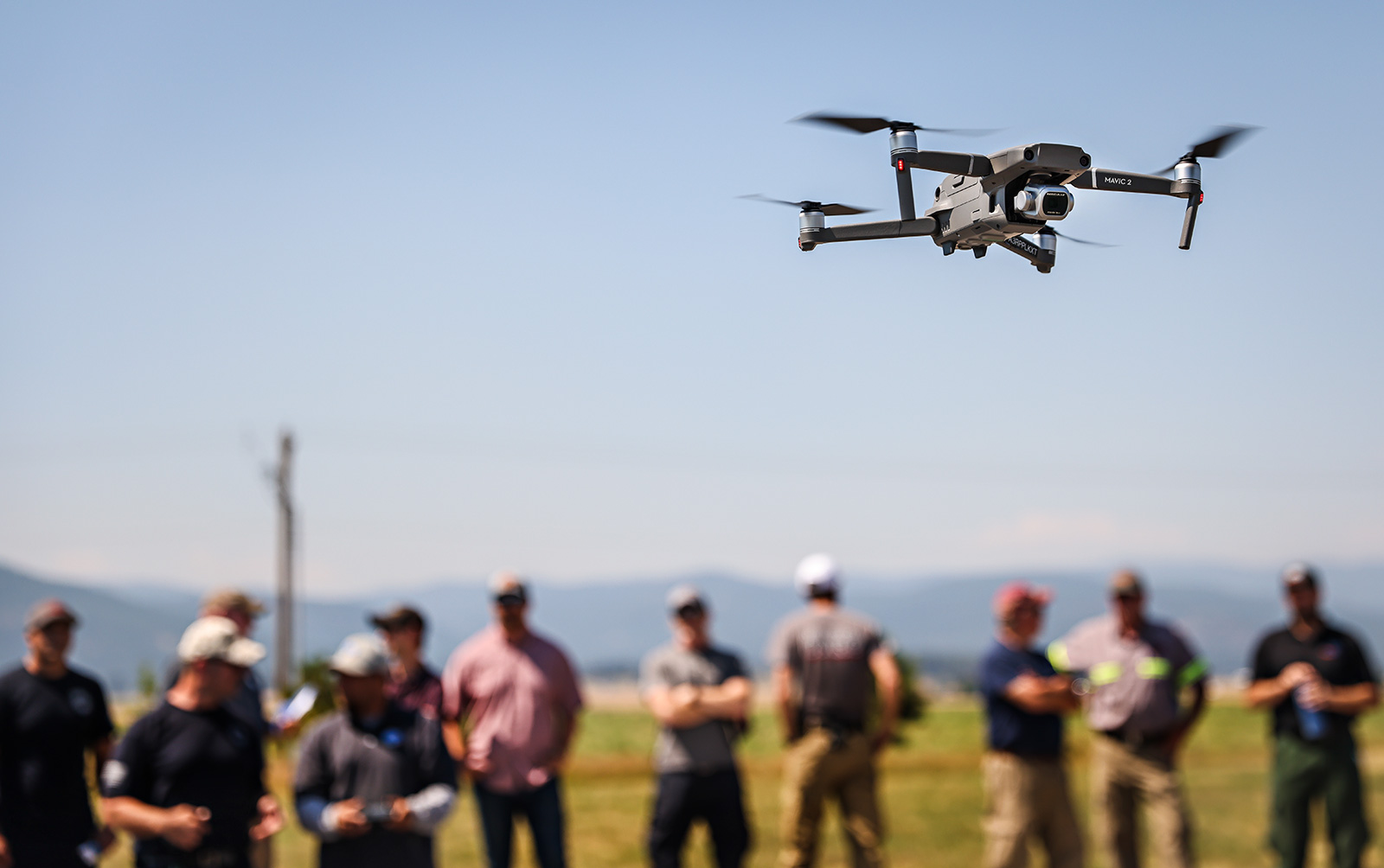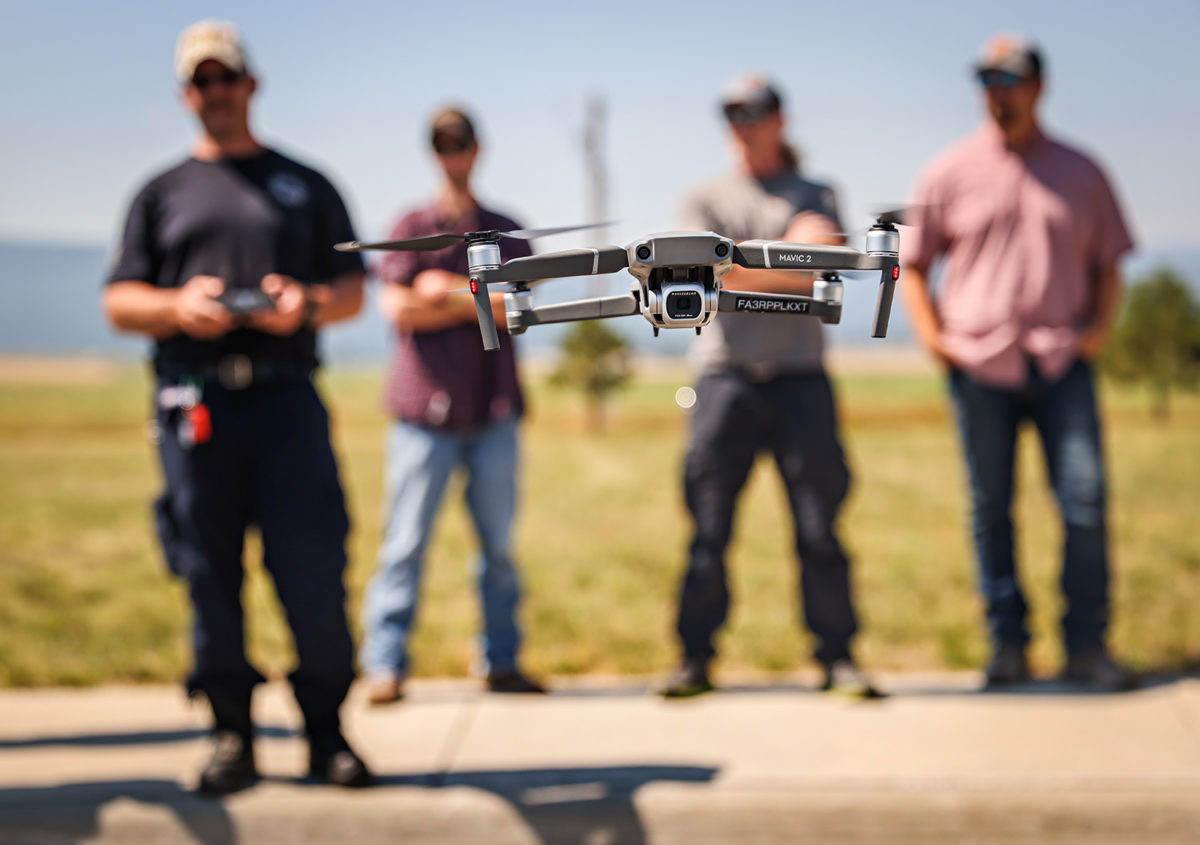A Fellowship of Fire
New York City fire department debriefs local forest agencies on how drone technology can help fight wildfires, part of an ongoing tradition of mutual assistance
By Skye Lucas
On Aug. 11, members of the Fire Department of New York (FDNY) met with representatives from the U.S. Forest Service, Montana Department of Natural Resource Conservation (DNRC) and the Kalispell Fire Department to discuss how unmanned aerial systems, or drones, can help combat large fires.
The four FDNY firefighters are part of the Special Operations Command for the Unmanned Aerial Systems (UAS) Robotic Unit and stopped by the DNRC’s northwestern land office as they wrap up their tour of duty fighting wildfires in the Northern Rockies.
While fighting the Boulder 2700, West Lolo Complex and Hay Creek fires alongside other Incident Management Teams (IMTs), FDNY Lt. Fred Carlson has educated local agencies and fire departments on new firefighting technology. Carlson helped to pioneer New York City’s drone program in 2017 and is a Small Unmanned Aircraft System (SUAS) pilot.
In addition to fighting fires and sharing insights on drone technology, FDNY Chief Commander Mike Quinn said his members were there to learn more about how fires are fought in the West.
“It’s a learning opportunity between the different agencies,” Quinn said. “We’re learning how to use different equipment, and they get to test out the drones.”

During the Aug. 11 afternoon meeting, Lt. Carlson gave a presentation on the history of FDNY’s UAS program, inspired in 2014 by a civilian who helped FDNY by flying his drone over an explosion in East Harlem, offering a bird’s eye view and showing drone technology’s potential in establishing situational awareness. It was apparent that drone surveillance could help direct crews when fighting fires.
“A thermal imaging camera in the sky, such as the Mavic 2 Enterprise Advance, can put real-time information in the hands of the incident commander and enable them to make decisions that could save property and life at a much quicker pace,” Carlson said.
Along the U.S. West’s wildland-urban interface, FDNY and Forest Service officials have a similar goal in mind: fire suppression.
Although agencies in the West have different obstacles to overcome when navigating UAS for firefighting, such as lack of cell service or having to cover greater distances, Carlson and other members of the crew vouched for its potential.
“Using aerial technology doesn’t take any jobs away,” Carlson said. “It helps to get your crew there faster to fight the red stuff with the wet stuff.”
The exchanging of ideas stems from a longer tradition of the Forest Service and FDNY learning from one another, which began after the Sept. 11, 2001 terrorist attack when the Forest Service sent IMTs to assist in response efforts.

Tim Murphy, retired deputy fire operations specialist for the Northern Rockies Coordinating Group, debriefed the meeting’s attendees with an anecdote illustrating how the Forest Service helped out the second largest fire department in the world.
“When the Forest Service’s IMTs arrived at the site,” Murphy said, “a FDNY chief officer looked at our Forest Service personnel and said, ‘You see any trees around here? How can you help us?’”
But the Forest Service did help, Murphy said, with its IMT greatly assisting FDNY with the rescue and recovery effort at the World Trade Center site in the days immediately following the attack. After that experience, the FDNY IMT was created to manage incidents in New York City and across the country.
From there, a relationship spawned from the mutual desire to help each other. In August 2003, FDNY shadowed the Forest Service’s Alaska Type 1 IMT while it managed a 21,000-acre fire inside Flathead National Forest. Crewmembers also learned about IMT functions during a crisis while working the Robert Fire in Glacier National Park.
Area manager of the DNRC’s northwestern land office, Greg Poncin, is a former Incident Commander for the Montana Type 1 IMT and has worked alongside FDNY members who have come out to help fight wildfires in the area.
“The FDNY making themselves available to the wildfire community as a way of payback following the events of 9/11, when several of our teams were there helping them,” Poncin said, “it’s a testament to this fellowship of fire that these professional firefighters undertake.”